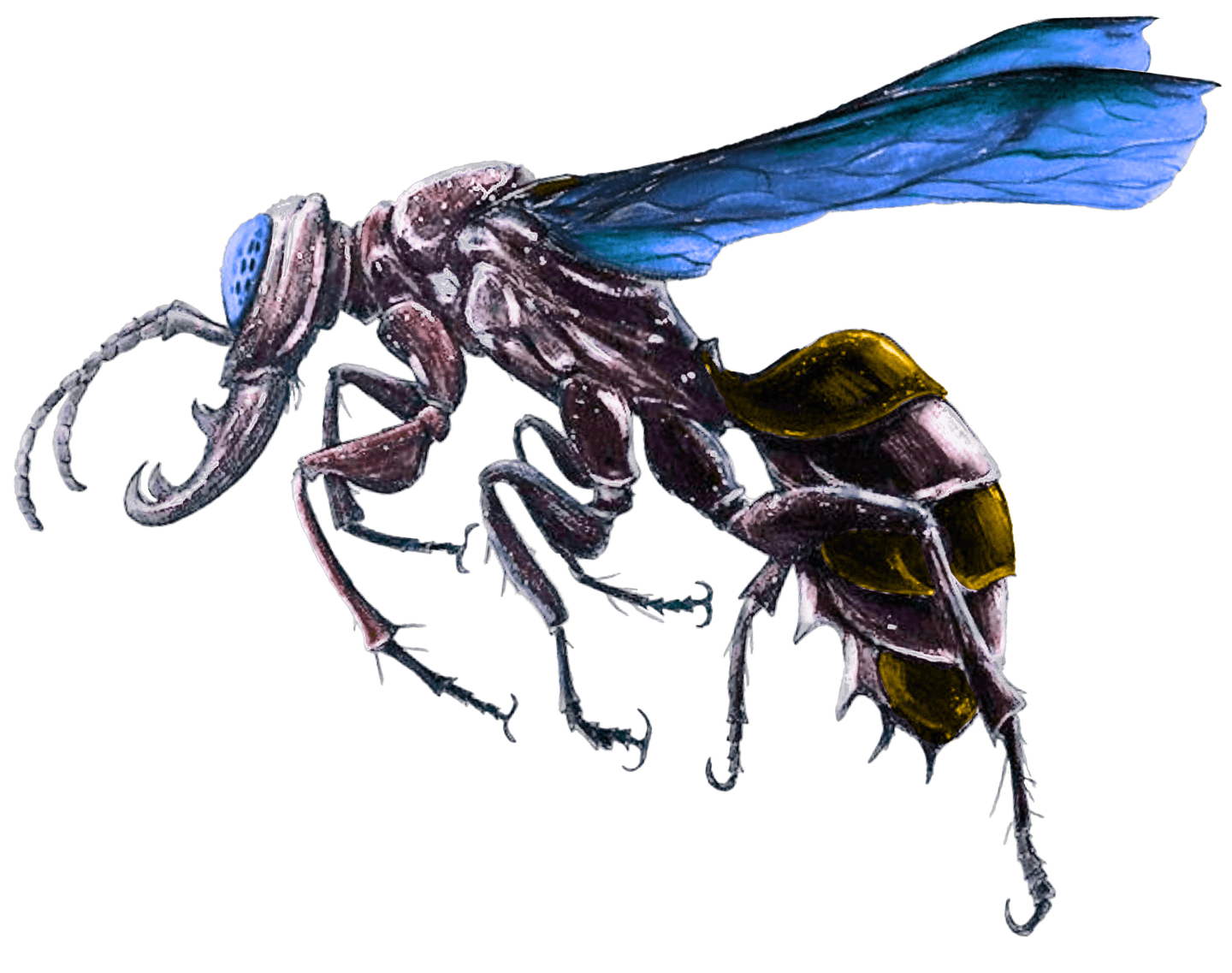Amadal Dragon-Killer
An Amadal Dragon-Killer is a semi-solitary parasitic wasp that preys on rodents and birds. Also known as Vespa Magnalaedo, it is the largest parasitic wasps that isn't strictly giant and most specimen are powerful enough to drag their prey if needed.
Basic Information
Ecology and Habitats
While unlikely to kill, larger animals will find the sting of the dragon-killer to be debilitatingly excruciating, hence the name. Dragon-killers are notoriously aggressive, often stinging with no apparent provocation, though they rarely sting more than once and never swarm. Though their venom is short lasting and very rarely lethal on its own, dragon-killers are lethal in a some sense; there are documented cases of animals ceasing essential actions after a sting, such as large birds squirming with pain midflight and diving down, or mountain goats losing their balance. Two such cases were in fact involving a humanoid:
Biological Cycle
V.Magnalaedo use their sting to paralyze their prey and inserting an egg sack, either injecting it in the tonsils of a small mammal (mostly rodents) or simply laying it in a birds gizzard; each sack contains an average of 3-5 eggs that hatch to larvae, that then proceed to eat the still-living prey from the inside.
Additional Information
Social Structure
Dragon-killers live in broods, mostly consisting of a few dozen individuals. They prefer to brood in vacant bird nests, building a torus using twigs and saliva; if a nest isn't vacant, they swarm one, killing the inhabitants. Mature wasps use this as a "base of operation" of sorts, with every new generation joining other hatchlings and making a new nest.
Geographic Origin and Distribution
Dragon-killers are endemic to the lower Amadals and the eastern Ostig plateau. They prosper in the western parts of the plateau as well, where they are an invasive species. The fauna east of the Amadals however does pose a formidable opposition to dragon-killers; paired with the population density in that area, they are rarely found more than a kilometer away from the Amadal foothills.
Current Date: 2nd of Latsum, 1572
Scientific Name
Vespa Magnalaedo
Lifespan
~15 years
Average Weight
25-35 g
Average Length
110 mm
Geographic Distribution




Comments